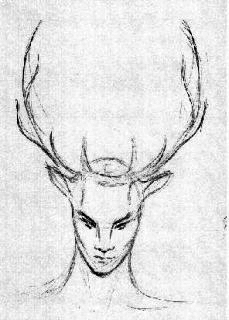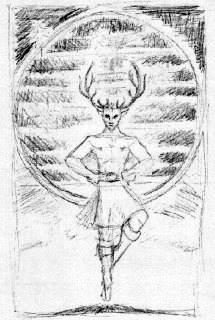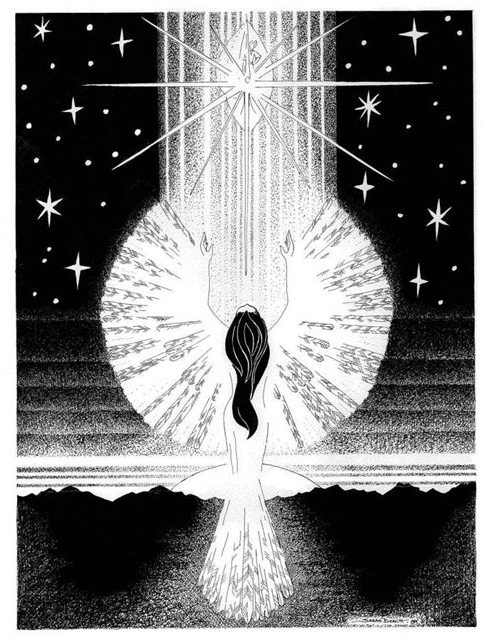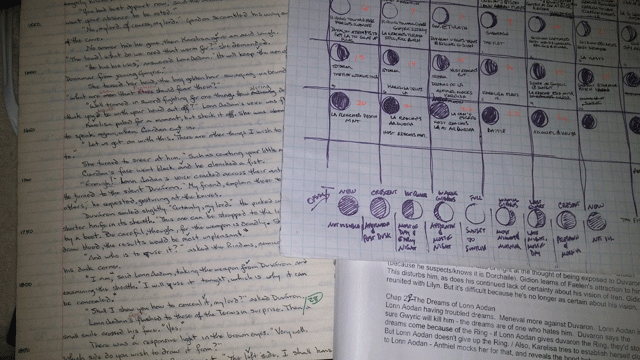(Originally posted on LiveJournal)
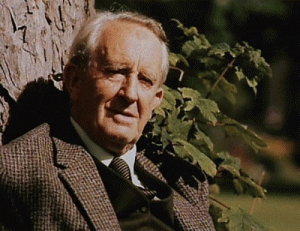
J.R.R. Tolkien
I began writing my first fantasy novel in high school. Inspired mostly by Tolkien, actually. In the sense of … it was reading Tolkien’s work that nudged me into actively focusing my writing impulses on creating a fantasy world. I loved the work of many other writers, and over the years they have had major effects on me. But it was Tolkien that really stirred up the storyteller in me (which had already made some piffling attempts at writing).
I even managed to eventually finish that fantasy novel – sometime early in my college career, so the writing process took about 3 years (squeezed in between school work). I was ambitious enough to send it to a publisher. Oh, it came back. And looking back now, I’m so very glad it did NOT see print. I believe the manuscript is buried in one of the boxes of papers stowed in a cupboard. I haven’t looked at it since…. my undergraduate days.
Once that first novel was done, I had attempted to build the fantasy world around it. I drew a huge world map of all the possible lands. I filled out long geneologies, with various history points along the way. I tried creating a mythology to fit this world. But I was never quite satisfied with it all.
So it got shelved. Besides, by that point, I was finishing my Bachelor’s degree and then starting graduate school. A rather work-intensive time.
Then I had an epiphany.
The following passage is from a notebook I started keeping in graduate school. It’s the opening entry (it was journal-style, basically). It’s me talking to myself about process, ideas, questions.
****************
How far this new inspiration will take me, I have no idea, but the impulse is strong enough to merit attention. After reading The Silmarillion, I’ve realized the problem my fantasy worlds have suffered — when compared to Tolkien. Mine have had no mythology – and that the creation of a mythology cannot, in a sense, be worked backwards from a tale-in-hand to the origins of the myth. If one goes the backward route the “mythology” lacks real mythic power.The challenge is to create something that is not simply a copy of Tolkien – no easy thing. But at the same time, there is no denying that what I may do will be, to quite an extent, derivative – from Tolkien, from Milton, Biblical tradition and so on. In fact, derivation is not such a disastrous thing, not if what is created has any beauty and/or truth of its own to enrich it.
All of which is a stating of stance. I shall begin to rework all my fantasy material. … It may be that all prior work will just be thrown out, leaving only traces of it, but no matter. ….
This rethinking was perhaps “conceived” in the reading of The Silmarillion, but I wasn’t aware of it till today. In the Chaucer class today, we did some talking about the figure of Nature in The Parliament of Fowls. Suddenly, Nature connected with Varda-Elbereth in my mind, turned around and there SHE was. Unfortunately, SHE arrived without a name, at least one that I recognize. Anyway, SHE is one of the Powers.
*************************
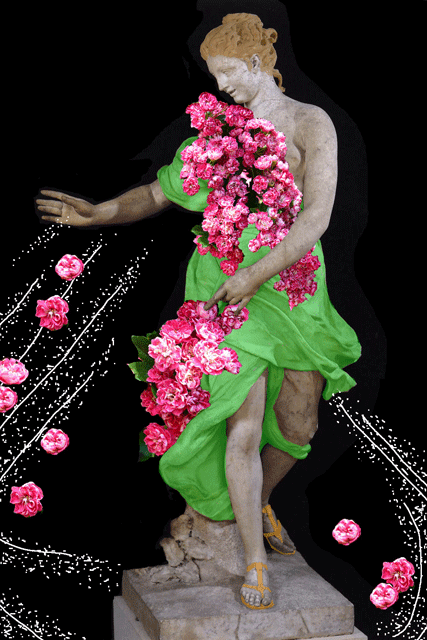 Anyway, that was where I restarted making my world. For the next year, SHE was called only “The First Lady” because this time around, I was determined NOT to impose names on things and characters, just because I needed an identifier when coming up with a story idea. A bit over a year later, SHE revealed her name was “Valiya”. What is interesting in the notebook was that about a month before name and character connected, “Valiya” is included in a list of names/words that had caught my fancy in passing. I would note down such things, but again, not rush to impose them on specific objects, instead waited for the “proper connection.”
Anyway, that was where I restarted making my world. For the next year, SHE was called only “The First Lady” because this time around, I was determined NOT to impose names on things and characters, just because I needed an identifier when coming up with a story idea. A bit over a year later, SHE revealed her name was “Valiya”. What is interesting in the notebook was that about a month before name and character connected, “Valiya” is included in a list of names/words that had caught my fancy in passing. I would note down such things, but again, not rush to impose them on specific objects, instead waited for the “proper connection.”
It took a bit of patience to proceed in that fashion. There are a lot of entries where characters are described along the lines of “the Son of the One who found that sword of star-stone”. (No, there isn’t actually such a character or object – I just made those up right now. But that was how things got identified.) As characters and things acquired names, I’d go back and write the names in above the lines.
But reading the opening thoughts in the journal reminded me again of the issue of derivation. Is “derivation” such a bad thing? I think we get so concerned about how some writers merely end up copying those who inspired them, that anything that looks vaguely like copying is considered second-rate. But even back then (okay, so I was a grad student, so it’s not so “uninformed” about literary processes – 😉 ) , I felt that when a writer such as myself found him or herself in sympathy with the outlooks of a previous writer, was inspired by them, admired them, wouldn’t it be expected that the works of that newer writer would be somewhat similar to the older works? And why would that be considered a failure of creativity?
I think that the real catch is for the new writer to find his or her own voice. It has taken me years to achieve a comfort level with my prose. The balance between clear, analytical prose and lyrical, loaded poetry has not been easy to achieve (and perhaps I still don’t always achieve it). But somewhere along the line, there came a point when my inner ear was no longer striving to mimic Shakespeare, Milton and Tolkien, but was rather listening to my inner voice.
Okay…. that’s a lot of rambling, so I guess I should stop for now. But maybe my next post will deal with the shaping of one or two of the basic myths for my fantasy world – from the first entries in this notebook to their current forms. Because these first two myths are also basic to The Ring of Adonel.
Comments
sartorias – Feb. 1st, 2008
Just as ye olde reality check, there is award-winning M. John Harrison’s take on worldbuilding and Tolkien and any fantasy that he and his particular paradigm-sharing friends don’t write, here
http://uzwi.wordpress.com/worldbuilding-further-notes/
Scum! We are risible scum, worthy only of scorn!
But aside from that, I don’t think there’s any worth in saying derivative is “bad”–there is an audience, as Tolkien himself noted about hobbits, who love the same story over and over, and who expect the same elements used in the same way.
But other readers will lose interest if they feel they’ve already seen the material, perhaps shaped in prose that appealed more, and if they know where it’s all leading, they feel they don’t have to read to the end.
It’s such a mileage variation thing.
scribblerworks – Feb. 1st, 2008
Ouch! Ouch! Ouch!
Really, I couldn’t read Harrison’s pompous rant beyond “Note 1”. There’s too much bias there. Flat out bias.
Let’s start with the point that he completely overlooks the fact that the FIRST audience of a writer’s work is the author himself! Therefore anything like “justification”, “verification”, “authentification” is completely pointless when it comes to worldbuilding. The author is NOT doing it for any secondary audience – he’s doing it for himself. At least — I’m certainly doing it for myself! Sure, I hope that others will be interested in venturing into my world. But I created/am creating my fantasy world as a place where I can let my own imagination run free, look at issues or perspectives as I want to.
The idea that a “world” is ONLY created in the minds of the readers (and those apparently being defined as “other than the author”)… ceeds AUTHORity to some figure other than the author! Duh!
But back to the matter of actual derivation….
I do agree with Tolkien in that humans do like to hear the same story over and over. Heck — I’m a great REreader myself. There are many books I like to go back to. I also enjoy intelligent resettings of “famous plotlines” — for instance: I adore Kurosawa’s Seven Samurai, but I’ve also enjoyed the various “retellings” of it (The Magnificent Seven, Battle Beyond the Stars); Clueless as a retold Emma. Indeed, one of the “major” stories in my fantasy notes is my personal version of the siege and fall of Troy.
But there’s a big difference between that kind of reflection of previous work, making it personal (and hence new) to the author, and an out-and-out copying of previous work. Of that… I have to admit that the most blatant example to me in fantasy is Dennis McKiernan’s Shadows of Doom from his The Iron Tower trilogy. Beat for beat, sentiment for sentiment, that book matched the crossing of Moria from The Fellowship of the Ring, and it annoyed the heck out of me. Not just for the copying in less satisfying prose, but because I’d purchased the trilogy because of the cover art (New American Library paperbacks). It was an impulse – I didn’t even scan a few pages of text… I liked the covers and bought all three (published at the same time, as I recall) in one fell swoop! Very fell.
I think the distinction between “good” & “bad” derivation is that the “bad” doesn’t really take you to Someplace Similar But New. It takes you to a cheap, cardboard copy of Another Place, maybe in different colors, but without real substance. “Good” derivation takes you somewhere where you get that pleasure of recognition, combined with the pleasure of Something New.
Well… at least that’s how I look at it.
All of which, in the end, is my scholar’s & intellectual’s mind explaining away/justifying the creator’s impulse to do what it wants. And it wants to tell stories “sort of like Tolkien”, without feeling the need to write in Tolkien’s world. (So, yeah…. I’ve also been low on the impulse to write fanfic. At least not in any other form than wanting to write certain TV shows, or comic book characters. 🙂 )
sartorias – Feb. 1st, 2008
Nodding…I’m with you, tho there are many readers out there who think Terry Brooks is far, far better than Tolkien.
scribblerworks – Feb. 2nd, 2008
Yeah, I know many like Brooks’ books. But I could never get very far into The Sword of Shannara. I kept tripping over what I could only consider tin-eared names. I mean, Allanon?? What is this? A Twelve-Step fantasy? (Really, that was my reaction. 🙂 )
margdean56 – Jan. 5th, 2009
Yeah, I kept thinking he should have a sidekick named Alateen. 🙂
wild_patience – Feb. 2nd, 2008
In my view, people (including in fiction) don’t need a mythology as much as they need a religion and a personal history. For what is mythology other than someone else’s religious history?
As a Christian, I’m comfortable with referring to the Christian mythos or mythology, because for some people, that’s all it is. Fantasy/SF in which the characters have a connection with their religion speaks to me and feels real. That was one of the things Peg Kerr did in THE WILD SWANS. She has her female fairy tale character praying as an everyday thing, because that would be a big part of your life in the Middle Ages in Europe. I love Bujold’s Chalion books in which her pantheon is real and affects the characters. Oh, did that speak to me when the Bastard spoke to Ista after she complained about not being sent help and he basically told her that God has no hands but ours!
I sometimes wish authors would think a little less about giving their characters/settings a mythology and more about giving them a religion that’s believable in the context.
scribblerworks – Feb. 2nd, 2008
I suppose we’re not really far apart. My use of the term “mythology” (as I think Tolkien’s was in the final analysis) signifies the stories that reflect one’s religious beliefs. Myths tend to be stories to explain meaning.
And that’s what was wrong with my “first world creation”. I tried to come up with supposedly mythic stories for my characters, but they were imposed from the exterior, rather than organic to the world. They didn’t really mean much. What happened with the restart was that the “mythic” stories are both “real” stories of the actions of the angelic powers on entering the material world, and also reflective of the meaning of the relationship between the created beings and the divine creator (as in God, not me).
But I think I know what you mean about making a distinction between “giving their world a mythology” and “giving them a religion that’s believable”. I just think many worldbuilders don’t understand that the two points should not be separate, but rather one and the same.



